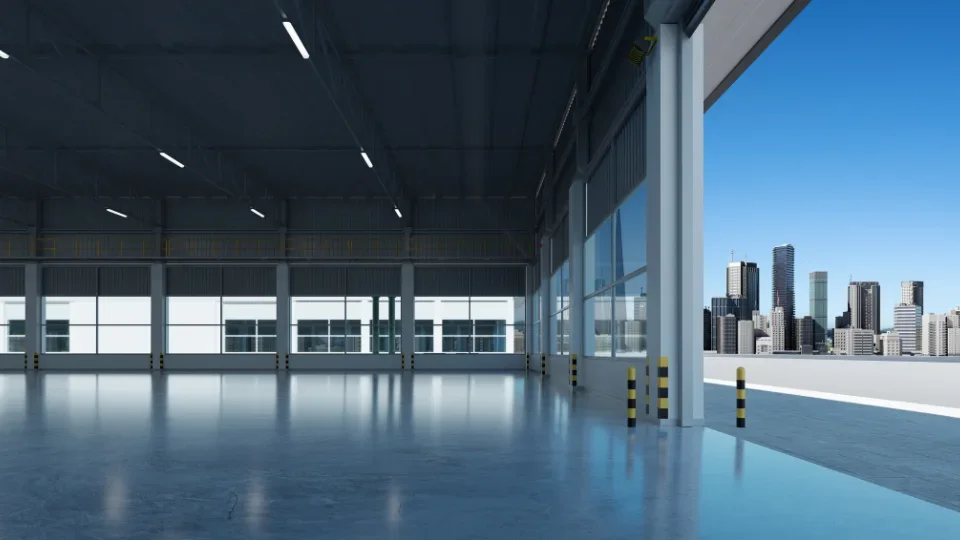Polished Concrete Colors: Finding the Right Look for Your Space
When managing a commercial or industrial facility, the flooring system you choose does more than support daily operations—it influences branding, safety, maintenance requirements, and overall aesthetics. As a result, many facility managers are turning to polished concrete not just for its durability but for its visual impact. One of the key advantages of this flooring solution is the wide range of polished concrete colors available. With the right color selection, a concrete floor can enhance lighting, support wayfinding, reflect brand identity, and hold up to heavy use without constant repair.
This blog will explore how to choose the right polished concrete colors for your facility, the different coloring methods available, and the benefits of investing in a custom finish that aligns with your space’s unique needs.
Why Color Selection Matters in Commercial and Industrial Spaces
For large facilities like warehouses, manufacturing plants, or office complexes, color is not just an aesthetic choice. In many cases, color plays a critical role in visual organization and workflow efficiency. For example, different sections of a warehouse may be marked with specific polished concrete colors to distinguish loading areas, pedestrian zones, or equipment storage. This creates a safer and more navigable space for employees and visitors.
Color can also help regulate mood and perception. Lighter colors tend to reflect more light, brightening up dim spaces and making them appear larger. This can reduce the need for overhead lighting and may lead to energy savings. On the other hand, darker tones can hide stains and traffic patterns better in high-usage areas while creating a modern, sleek appearance that aligns with certain brand aesthetics.
Common Polished Concrete Color Options
Polished concrete offers a surprising level of versatility when it comes to color. Facility managers have access to a wide palette of finishes, each with unique advantages depending on the space’s function and design goals.
Natural gray remains a popular choice due to its timeless and clean look. It complements nearly any industrial setting and is often the most cost-effective option since it requires minimal modification. Earth tones like browns, tans, and warm beiges are common in retail or hospitality settings where a welcoming feel is desired. These colors create a softer, more inviting appearance that doesn’t sacrifice performance.
More dramatic options such as charcoal or deep black give off a high-end look, particularly in showrooms or tech-forward office spaces. These darker shades are often paired with high-sheen finishes to reflect light and emphasize the smoothness of the polished surface. For spaces requiring a bolder statement or adherence to brand-specific color schemes, custom dye applications allow for nearly endless choices.
The success of any color selection depends on balancing visual goals with practical needs. For example, in a distribution center, brighter floor colors might be chosen to improve visibility and reduce eye strain over long shifts.
How Polished Concrete Gets Its Color
There are several ways to introduce color into polished concrete, and each method has implications for cost, durability, and design flexibility. For new construction, integral coloring is a common approach where pigments are added to the concrete mix before pouring. This allows for even distribution throughout the entire slab, meaning chips or wear won’t reveal a different base color underneath. This method is ideal for high-traffic areas where longevity is critical.
Stains and dyes are more popular for existing concrete slabs or for projects seeking a wider range of design effects.
For bolder and more uniform coloration, water-based or solvent-based dyes are used. These penetrate the concrete surface and offer a broader spectrum of colors than acid stains. When applied after the polishing process begins, they allow for better color control and layering. Dyes are often used in commercial environments where branding and color consistency matter most.
Concrete dyes, stains, and pigments each offer unique benefits—dyes produce vibrant colors quickly, stains create natural variegated effects, and pigments deliver consistent, UV-stable color throughout the slab. Understanding these differences can help facility managers choose the most effective solution for their space and conditions.
Key Factors to Consider Before Choosing a Color
Before making any decisions about polished concrete colors, it's important to assess the unique needs of your space. Start by evaluating lighting conditions, foot and equipment traffic, exposure to moisture or chemicals, and the kind of impression you want to make. For example, in a facility where forklifts are frequently used, a mid-tone gray may be more effective at hiding tire marks than a pale color.
Additionally, consider your long-term maintenance plans. While polished concrete is easy to care for, certain colors may show dust or dirt more quickly than others. This can be addressed by working with a contractor who offers high-performance sealers or coatings designed to minimize visual wear.
In highly regulated environments like food processing facilities or pharmaceutical manufacturing, it’s critical to verify that color additives and surface treatments meet standards such as those outlined in FDA facility design requirements, which emphasize non-absorbent, cleanable, and chemically resistant surfaces
Matching Aesthetic Goals with Performance Needs
While aesthetics are important, commercial and industrial facilities often face competing priorities. A polished concrete color that looks appealing in a design mockup must also hold up under pressure—literally. Selecting a darker color for a loading dock may look sharp, but if that surface is constantly exposed to oil, chemicals, or abrasive materials, the finish and color need to be up to the task.
It’s also worth considering how your flooring fits into the overall facility branding. For example, a corporate headquarters might incorporate company colors into polished flooring at the entrance or reception area. This subtle detail can reinforce branding while showcasing your commitment to design quality.
In educational or public buildings, colors can also support wayfinding. Using polished concrete colors to differentiate between wings, departments, or functional zones can make large buildings more intuitive to navigate.
Long-Term Value of Colored Polished Concrete
One of the biggest advantages of investing in polished concrete is its long life cycle. With proper maintenance, a polished concrete floor can last decades without the need for major repairs or replacement. Colored polished concrete offers all the same performance benefits—abrasion resistance, moisture tolerance, and low maintenance—with the added advantage of visual flexibility.
Unlike tile or epoxy flooring, polished concrete doesn’t peel or lose adhesion over time. It can be refinished periodically to refresh its appearance, and color touch-ups are possible with compatible dyes. This makes it a smart long-term investment, especially for facility managers focused on reducing total cost of ownership.
Work with a Contractor Who Understands Your Space
Every facility is different, and choosing the right polished concrete colors involves more than picking from a swatch book. McCord Contractors brings years of experience in commercial and industrial flooring, offering expert guidance from color selection through final polish. Our team works with you to assess lighting, usage, and branding to recommend finishes that look good and hold up in your environment.
We specialize in concrete polishing solutions that elevate function and design for manufacturing plants, warehouses, retail buildings, office complexes, and more.
Contact McCord Contractors today to discuss your polished concrete color options and get expert support for your next flooring project.

